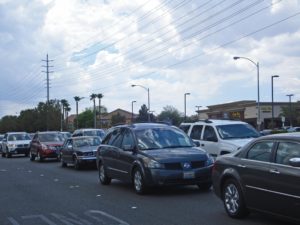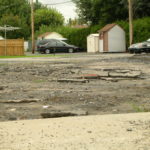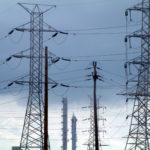No fees
The Board has decided that for the foreseeable future we will not charge fees for full voting membership of Talking Infrastructure. Full membership will, instead, be by invitation to those Community members that contribute in a meaningful way to the work of the Association.
Our first invitations go to
- Kerry McGovern, of K.McGovern & Associates, who initiated, and collaborated with Talking Infrastructure in designing, a 5 day workshop in the audit of infrastructure performance for Auditors-General in the Pacific Islands.
- Mark Neasbey, of the Australian Centre for Value Management, who has contributed many posts for the Blog, that have been amongst the most highly read and commented on.
- Ben Lawson of Common Thread Consulting who has been a regular reader and prolific commentator on the blog
Our congratulations to Kerry, Mark and Ben. Your commitment to the development, information exchange and debate ideals of Talking Infrastructure are putting us where we are today.
Thank you.
A Question
 Ben Lawson’s response to the post “I measure therefore I manage” (do read it!) reminded me of a question I have recently been asking myself – What’s the difference between ‘populism’ and ‘community participation’? Is it, for example, the difference between uninformed (and often knee-jerk) reaction and informed and considered judgement? And, if so, what can we do to lift the level of informed response?
Ben Lawson’s response to the post “I measure therefore I manage” (do read it!) reminded me of a question I have recently been asking myself – What’s the difference between ‘populism’ and ‘community participation’? Is it, for example, the difference between uninformed (and often knee-jerk) reaction and informed and considered judgement? And, if so, what can we do to lift the level of informed response?
Good and Bad Practice
Back when I was writing “Strategic Asset Management” it was my job to note both good and bad practices in the measurement of community satisfaction. The clue? Good practices stepped themselves out from the pack by the amount of real understanding of the problem that they generated (both the costs and the consequences).
Citizen Juries
One example was the use of Citizen Juries, such as the exercise in Boroondara where a representative sample (about 20) of the citizenry were engaged (and paid!) to learn over a period of six weeks about the issues and the options facing the city and then – as informed citizens – to give their considered opinions. It is notable that the City then implemented those decisions, and the jury members were the strongest advocates for both the City and the Council.
Sydney Opera House
A smaller example was the decision to replace the broken flagstones in the courtyard of the Opera House. The question was ‘should all cracked flagstones be replaced or only those that were major problems?’ Three costings were developed according to the degree of replacement and pictures were provided of both the current situation and what the final result would look like for each option. Then local visitors (i.e. those that would be taxed to pay for it) were polled to see what level they supported. With both the costs and the consequences in evidence, those polled voted for a moderate degree of renewal, not the most expensive. You can see that good practice asked specific questions and provided both costs and consequences.
Poor practice?
Current local government ‘satisfaction surveys’ on the other hand ask general questions and provide neither costs nor consequences.
How would you prefer that decisions on your rates and taxes be determined?

No I’m not talking about huge structures, but about talking with Uber drivers about infrastructure decision making, and what I have learned from them.
Uber drivers are business people, they are characterised by having a drive for improvement of their lives and are often driving as a second career or while transitioning from one life circumstance to another, new job, new city, new family, etc. They are also polite.
As professional drivers they have a serious interest in transport infrastructure, especially roads. As service providers they will listen to customers’ stories. My drivers are often surprised when I voice the opinion that we don’t need more lanes, roads and tunnels; especially if we are in slow-moving traffic. There then follows a discussion, usually around 20 minutes, that covers the underlying needs for roads, traffic loads and the factors that contribute to peak congestion, the available solutions to the problems of road transport and the contribution that smart, connected technology can make to the problems of city life.
Since my drivers are constant consumers of connected technologies (GPS, booking apps, forecasting software) they have no trouble understanding the benefits that flow from the ideals of “Smart Cities” and easily understand that improvements flow from having information sources connected. They see that transport issues are directly related to things that can be adjusted with a connected view of the world. They also comprehend that the technology needed to address these issues has been available for years, and that it is the lack of integration of business, government and social information and policy that retards us.
What I have learnt from Uber drivers is that a conversation of 20 minutes can change a person’s understanding of infrastructure needs completely, from a view that continuous infrastructure construction is essential to a view that the solution to congestion of all kinds can be addressed with understanding and leadership.
Smart cities are coming, but I’d like the benefits now. Rather than upgrading highways, I’d like to see freely available information that can be used to tell drivers that leaving 15 minutes later will get you to your destination at the same time and with less fuel and frustration. Then service providers like Uber can give me an option to have a cup of coffee before my car arrives and everybody wins.

The future – or our past!
As everyone now knows, the US President has withdrawn the USA from the Paris Climate Accord. Although he claims to be saving US jobs, the strong likelihood is that it will lose US jobs as the renewal energy industry at the moment is the fastest growing industry in the USA. With President Trump’s decision, Germany is expected to take the lead in wind energy and China in solar.
Australia is now making key decisions for its own energy future. Will we permit the Government to continue to back the old technology, coal, or force it to support the new renewables? The next big gains are to be made with renewal energy battery storage and the encouragement and the development opportunities we provide now could be decisive. Companies now developing in this area in Australia could have a real chance at world leadership. Or they could miss out to more innovative governments (e.g. California which is taking an opposite stance to the federal decision, and being very active about it.) Infrastructure decisions have recently been discussed in terms of immediate construction jobs. but they have a longer term importance that goes far beyond mere, and relatively temporary, construction jobs. The techniques we develop now could have major export capabilities to the entire world.
The USA withdrawing from the Paris Climate Accord suits those who gain from oil and fossil fuel exploitation more generally – oil producers in Russia and Saudi Arabia – and coal producers in the USA and Australia. An interesting question for Australia is who has the political strength in this country – the coal lobby or those promoting renewable energy? This is not an idle question. For a long time, Australia has been content to follow America’s lead. Will it this time?
Emanuel Macron, newly elected President of France, recently addressed the USA and the world – in fluent English! – arguing that France, and Europe, will continue the fight to control carbon emissions – ‘to make this planet great again’
Will Australia?
 To conclude our current discussion of “If you can’t measure it, you can’t manage it” to its end point, let’s consider the consequences of taking this too literally- “I measure, therefore I manage”
To conclude our current discussion of “If you can’t measure it, you can’t manage it” to its end point, let’s consider the consequences of taking this too literally- “I measure, therefore I manage”
There is an industry now for collecting data, massaging it, producing charts or spreadsheets – for others to use. So how much time is spent finding out whether the data is actually used and appreciated? Is there a process for following through the decisions made on the basis of that information to see how the data could be improved?
What can we do to improve our management?
Deming was, of course, a great believer in the value of metrics and statistical analysis, but even he realised that there was more to management than metrics and stated that one of the seven deadly diseases of management is running a company on visible figures alone.
A great example of the dangers of so doing can be drawn from the electricity company that decided to withdraw from service its most recent (and thus most efficient) coal fired plant only two thirds into its life and to build a new power plant using a new and untested coal source – because their model told them to! Questioning revealed that neither the modeller nor anyone else knew what was causing the model to generate its results.
Many a works system is designed to determine when works should be carried out. Inevitably this is based on the designer’s best knowledge and judgement at the time. But what if circumstances change? What alerts us to the fact that there IS a change? Do we know enough to make adjustments? Are we critically analysing the output of the system or do we take the system outputs for granted?
Question: Do you have examples of where measurement has led us astray?
 In our May 20 Blog Post we challenged the uncritical acceptance of the notion that “If you can’t measure, you can’t manage” But measures can be deceptive, when they are chosen without understanding as we saw in the May 24 Blog Post. With Government and Senior Management focussed on the notion of managing by measurement, more measurements are being demanded all the time – in all areas, not just infrastructure. In order to survive, operatives seek to comply by measuring what is easiest, rather than, measuring what is important.
In our May 20 Blog Post we challenged the uncritical acceptance of the notion that “If you can’t measure, you can’t manage” But measures can be deceptive, when they are chosen without understanding as we saw in the May 24 Blog Post. With Government and Senior Management focussed on the notion of managing by measurement, more measurements are being demanded all the time – in all areas, not just infrastructure. In order to survive, operatives seek to comply by measuring what is easiest, rather than, measuring what is important.
Some things are easier to measure than others – quantity, for example, is easier to measure than quality. Inputs are easier to measure than outputs. Outputs are easier to measure than outcomes. Products are easier to measure than services.
The aim of all management is to secure desirable outcomes but it is easy to get diverted into measuring what it is easy to measure rather than what it is important to measure,
For example, many councils have hours of videos of storm water infrastructure – unanalysed! Lots of measures – but no management- worthy information.
The condition of road seal is easier to measure than the condition of the underlying road pavement, the first is visible whereas the latter is not. Some years ago a state transport authority adopted a policy that they called ‘a stitch in time’, quite a catchy title for maintenance. Under this policy they required agencies to reseal every ten years and to reconstruct the road pavement every 100 years. Easy to measure!
But it resulted in reseals being carried out over decidedly unsound road pavements because the time for road pavements was not up. It will not come as a surprise that the reseals did not last, much money was wasted and the overall condition of roads deteriorated until the policy was changed.
Question: Is there an answer to this problem? What is your experience?
 It is important not to confuse the notion of management with metrics.
It is important not to confuse the notion of management with metrics.
Metrics are important – when they add to our understanding.
However, frequently they substitute for understanding.
Creating our own RELEVANT metrics is time consuming, so there is a natural human tendency to seek short-cuts. For example when benchmarking first came to our attention it was through a thorough examination of the company’s own processes and comparison with those of its chosen exemplar. It took a lot of time, but was very successful. Others wanted the success but were not prepared to put in the time and effort understanding either their own processes or those of the intended benchmark. So they skipped the understanding and analysis stage and went straight to collecting metrics. A lot of time was wasted and bad judgement calls made in the 1990s and 2000s because of this. Using figures from other times, places and cultures without understanding is as foolish as it sounds, but is still being done.
The ‘life’ of assets is an important factor in many decisions, from costing, to planning, to intervention. But few ‘lives’ are calculated based on the type of asset involved and conditions of its use. Some years ago, a Transport Company assumed that the life of its buses was 12 years. No-one actually knew where the figure came from but they swore by it. When challenged, it turned out that the figure had come from a statement – made some 15 years earlier – by the Chief Engineer at the time who had said: “We don’t know how long a bus should last but it certainly shouldn’t be more than 12 years.” This was a statement based on his best professional judgement at the time. But 15 years had passed. When a proper analysis was conducted the figure turned out to be 16+ years. So the outcome of accepting, uncritically, the earlier metric, had caused early disposal and a 25% loss in bus value.
Question: What has been your experience with metrics?
 With the world changing as fast as it is today, I suggest we need to look again at a number of notions that may have served us well in the past but may now be outdated or corrupted. In any case, they warrant a critical ‘second look’. And where better to start than with the well know prescription
With the world changing as fast as it is today, I suggest we need to look again at a number of notions that may have served us well in the past but may now be outdated or corrupted. In any case, they warrant a critical ‘second look’. And where better to start than with the well know prescription
“If you can’t measure it, you can’t manage it”
Where did this come from?
It is usually ascribed to Edward Deming (or, sometimes, Peter Drucker). Deming was an American statistician who rose to fame by helping Japanese manufacturing industry improve the quality and reliability of its product through concentrating on measures that enabled them to reduce variability.
But Deming didn’t actually subscribe to this at all!
Deming is often misquoted as saying, “You can’t manage what you can’t measure” but Deming realised that many important things that must be managed can’t be measured. He asked “Spend $20,000 training 10 people in a special skill. What’s the benefit?”, and answered “You’ll never know! You’ll never be able to measure it. Why did you do it? Because you believed it would pay off!”
In “Out of the Crisis” (p.121), Deming cites Lloyd S. Nelson, director of statistical methods for the Nashua corporation, “The most important figures that one needs for management are unknown or unknowable, but successful management must nevertheless take account of them.”
So what are the downsides of adhering to this prescription?
Gut feel, intuition, imagination all play a role in management, but today we tend to denigrate these elements and consider them less important than metrics. (As an aside, every business man is urged to do consumer surveys to measure the likely demand for new products and to then base his decision on the metrics. As is now well recognised, if Steve Jobs had thought that way we would not now have the iPhone, the iPad, and the iPod; products that, at the time, were beyond customers’ perceptions.)
There is more to management than simply measurement.
Question: What are the Upsides, and what the Downsides of uncritical acceptance of this management prescription?
 Another way to look at critical infrastructure.
Another way to look at critical infrastructure.
Linda Newton, at Carlton Univeristy in Canada teaches part of a program called ‘Infrastructure Protection & International Security’. It’s unique in that it combines students with a policy/international studies background with students with an engineering/architecture background. Each group takes courses from the other area along with several core courses.. Linda’s focus is on the definition used by both ISO 55000 and the European Commission but starts by positioning Critical Infrastructure from a historical perspective.
How did it evolve?
Is what was critical in the past still critical today and will it remain critical? This really gets students thinking about Critical Infrastructure. She uses photographs to illustrate the evolution of Critical infrastructure in the first lecture of the course & then asks ‘what’s the link between the following: e.g. Tower of London, London Docklands (now parks), Berlin Wall, Minuteman missile silos, etc.?’ (Answer: They were all critical at one point in history.)
The focus is on what makes an asset critical
This is both from the definition and then within its category, not on the vulnerability of assets from a security perspective but from an AM perspective. The role of an Asset Manager is to ensure infrastructure is managed as best as possible so that those who make emergency preparedness/business continuity planning decisions, whether the Critical Infrastructure is public or private, do so knowing the state of their respective critical assets. It’s the job of the AM to ensure there is redundancy and resiliency in critical assets, and advise accordingly, not because of an ‘evil intent’ but because it’s sound AM. It’s about information and making sure we have what we need at all phases to make informed decisions.
How do you look at – and deal with – critical infrastructure?
 When the Australian Government created a new body to scrutinise infrastructure asset sales for security risk, it occurred to me that we have made infrastructure vulnerable by making it large and interconnected. This is true of both physical and financial infrastructure (e.g. the banking system).
When the Australian Government created a new body to scrutinise infrastructure asset sales for security risk, it occurred to me that we have made infrastructure vulnerable by making it large and interconnected. This is true of both physical and financial infrastructure (e.g. the banking system).
In the past this was a means to greater efficiency and we were prepared to take the risks involved. Today, with technological developments, however, we can decrease the criticality of critical infrastructure by disaggregating, decentralising, and changing the ownership structure. This is particularly so for banking. But take electricity as an example. A series of interconnected, community-owned, local solar grids would be less susceptible to power failures as well as to actors of ‘evil intent’.
The blockage is the change in ownership structure. Not unnaturally, incumbents stand to lose. Large companies and governments in electricity supply are vulnerable to both criticality and financial risks. They have been putting a lot of thought into the changes that can be made so that we should not assume that they will resist change – although it is probably in their interest to slow it down. We all fight to preserve our own, it’s only natural.
So, if we want to see change in the community interest, it is in that interest to find ways to help current owners make the transition – profitably and with minimal delay.
What is being done, or could be done? What could we support? Ideas?

Recent Comments